The Bagpipe Society
Pewter Inlay on the Boha
During an extensive historical survey of the boha, the bagpipe of the Gascon lands, we came across a large number of examples which displayed the craft of pewter inlay. This article will illustrate the technique previously described in Chanter Winter 2016 by Pascal Petiprez from the COMDT (Toulouse-France). It will show what the study revealed about the different uses of pewter in boha design and also show some of the various applications on the instruments.
We observed that the pewter was used to tackle four different technical challenges:
Making Reeds
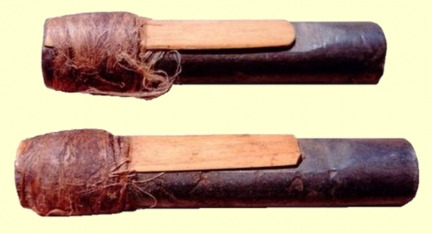
Four reeds were found with a pewter body holding the reed tongue (BdG-2011-1 “Benquet”).
Repairing Damage:
Here are some examples of repairs::
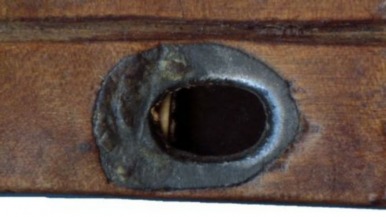
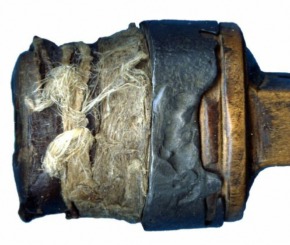
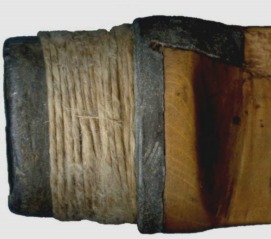
Protecting the Wooden Parts:

Pewter had often been used to consolidate some parts of the instrument, especially the extremities. On these pictures, the pewter acted as a bumper and protected the wood (BdG-2012-2 “Padera” - BdG-2013-7 “Claouriot” - BdG-2013-3 “Mougneres”).
Decorating the Bagpipe
Last but not least, the decoration seemed to be the most important use of pewter in the design of the bohas and bagpipes in general. Jean-Luc Matte made an inventory of the different geometric figures found on the bagpipes (http://bit.ly/Chanter53). In 2013, Frédéric Vigouroux included the boha in this inventory.
Pewter Decoration on Historic Bohas:
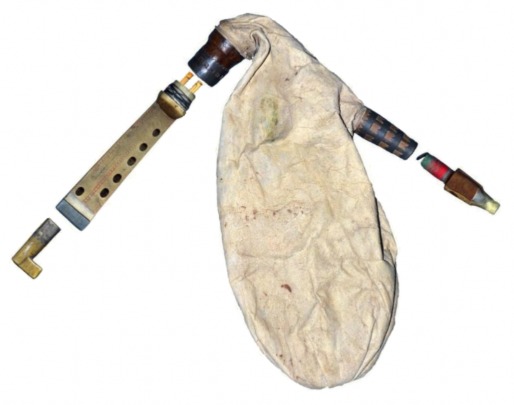
Decorations appear on four different parts of the old bohas:
- the connectors
- the chanter
(pihet + brunider)
- the blowpipe
- the extensions of
the brunider
There are two types of connectors on the boha, one for the blowpipe and one for the chanter.
Blowpipe Connectors:
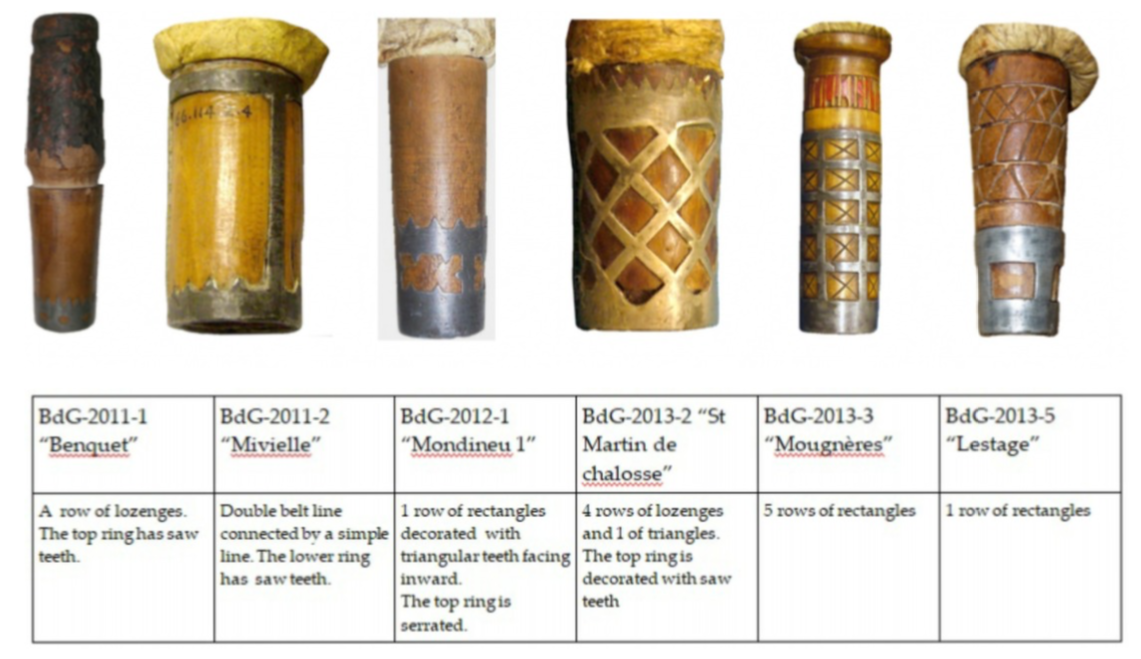
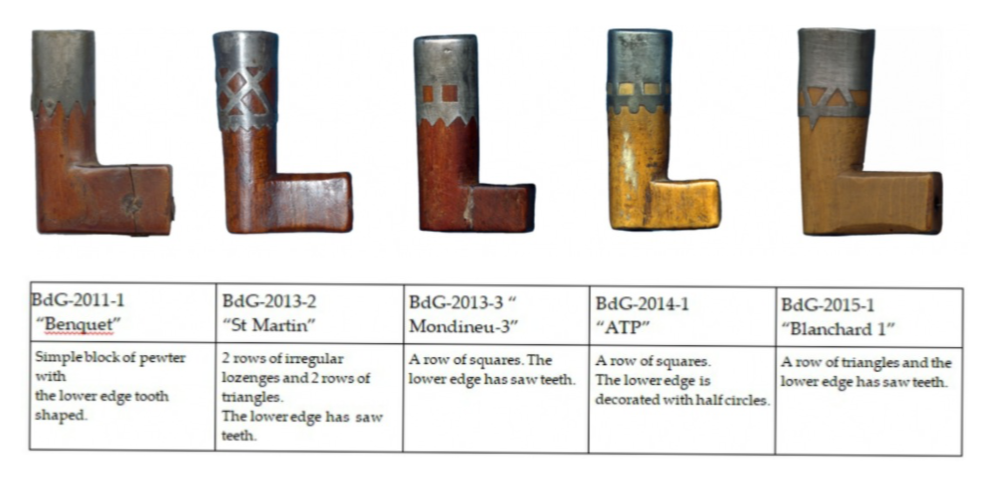
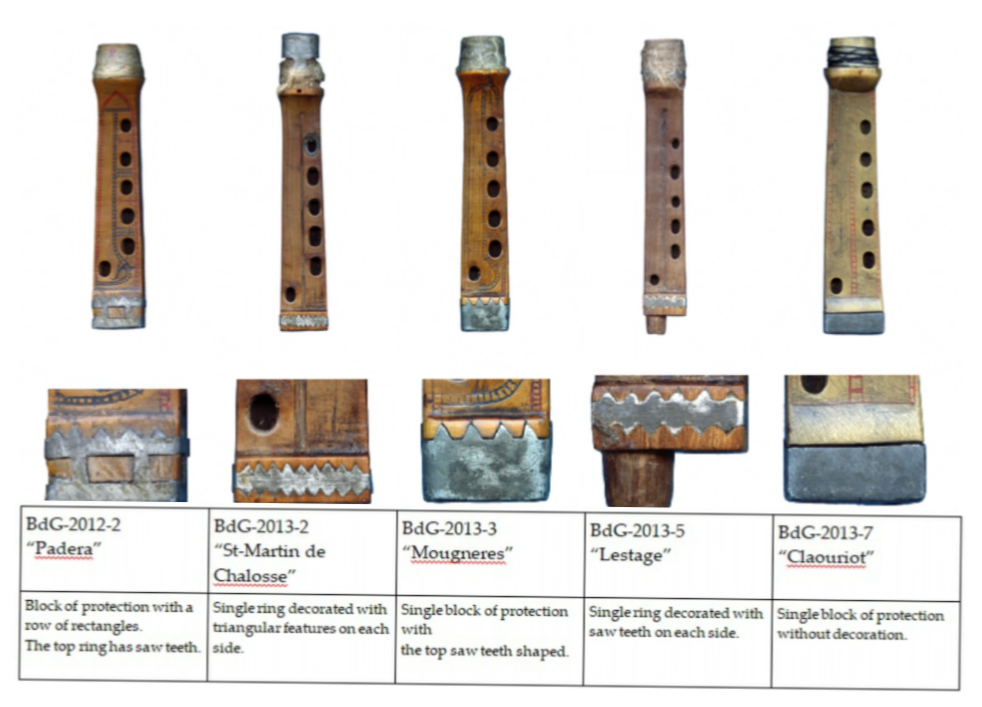
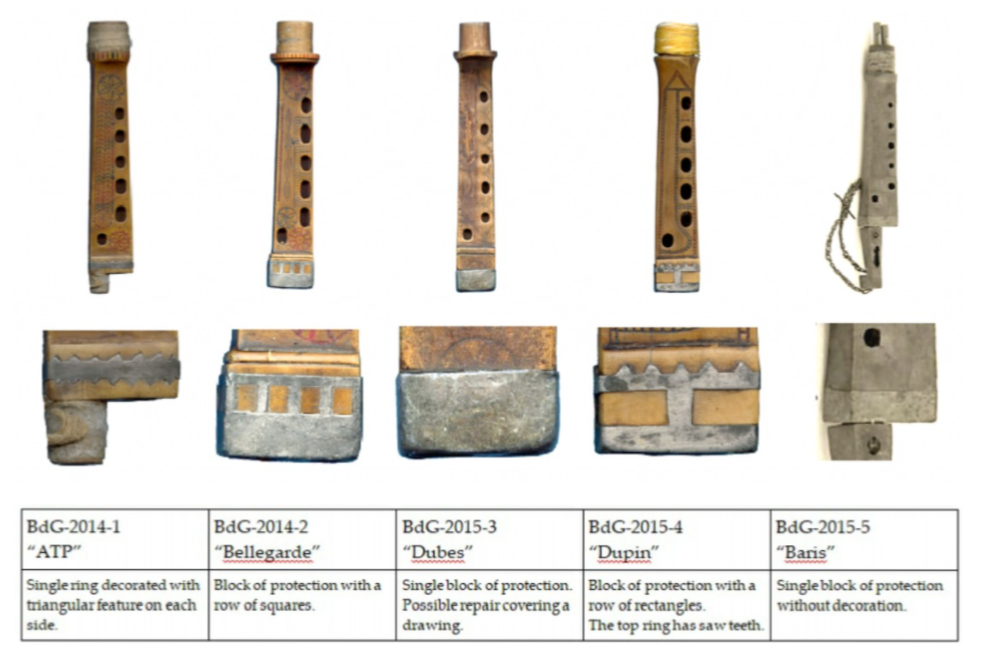
| BdG-2011-1 “Benquet” | BdG-2011-2 “Mivielle” | BdG-2012-1 “Mondineu 1” | BdG-2013-2 “St Martin de chalosse” | BdG-2013-3 “Mougnères” | BdG-2013-5 “Lestage” |
|---|---|---|---|---|---|
A row of lozenges. The top ring has saw teeth. |
Double belt line connected by a simple line. The lower ring has saw teeth. | 1 row of rectangles decorated with triangular teeth facing inward. The top ring is serrated. |
4 rows of lozenges and 1 of triangles. The top ring is decorated with saw teeth |
5 rows of rectangles | 1 row of rectangles |
BdG-2013-7 “Claouriot” |
BdG-2014-1 “ATP” |
BdG-2014-2 “Bellegarde” | BdG-2015-1 “Blanchard 1” |
BdG-2015-4 “Dupin” |
|---|---|---|---|---|
3 rows of rectangles with 1 triangular feature at their basis. The top ring has saw teeth. |
1 row of lozenges surrounded by 2 rows of triangles with 1 triangular feature at their basis. The top ring has saw teeth. |
7 rows of squares. | 2 rows of triangles and 1 triangular feature at their bases. The top ring has saw teeth. |
row of trapezes, alternate inversions. The top ring has saw teeth. |
Chanter Connectors:
| BdG-2011-2 “Mivielle” | BdG-2012-1 “Mondineu 1” | BdG-2013-2 “St Martin” | BdG-2013-3 “Mougnères” | BdG-2013-5 “Lestage” | BdG-2013-7 “Claouriot 1” |
|---|---|---|---|---|---|
| Row of rectangles with rounded bases and triangular feature opposite | Row of triangles with a triangular shape on their base. Top ring has saw teeth | A row of lozenges surrounded by 2 rows of triangles with a triangular tooth on their base. The top ring has saw teeth |
1 row of lozenges surrounded by 2 rows of triangles. The top ring has saw teeth and the lower ring is carved. |
1 row of lozenges with triangular teeth on their base, surrounded by 2 rows of triangles with triangular teeth on their base. Top belt has saw teeth. | A row of squares. The top belt has saw teeth. |
| BdG-2013-7 “Claouriot 2” | BdG-2013-8 “Dardey ” | BdG-2014-1 “ATP” |
BdG-2014-2 “Bellegarde” | BdG-2015-1 “Blanchard 1” | BdG-2015-4 “Dupin” |
|---|---|---|---|---|---|
| A row of squares. Top belt has saw teeth. | Single ring decorated with triangular feature on 1 side. | 1 row of rectangles with angled teeth all around and on the outsides. | 1 row of rectangles and 1 of lozenges in between 2 rows of triangles. The top ring has saw teeth. |
1 row of lozenges in between 2 rows of triangles. The top ring has saw teeth. |
1 row of squares with triangular teeth on the base and 1 row of polygonal shapes. The top ring has saw teeth and above it there is a single line. |
BdG-2011-1 “Benquet” |
BdG-2013-2 “St Martin” |
BdG-2013-3 “ Mondineu-3” |
BdG-2014-1 “ATP” |
BdG-2015-1 “Blanchard 1” |
|---|---|---|---|---|
Simple block of pewter with the lower edge tooth shaped. |
2 rows of irregular lozenges and 2 rows of triangles. The lower edge has saw teeth. |
A row of squares. The lower edge has saw teeth. | A row of squares. The lower edge is decorated with half circles. |
A row of triangles and the lower edge has saw teeth. |
Pewter inlay on the blowpipe:
Some of the nineteen blowpipes we found were decorated - but never with pewter. However, one blowpipe had pewter to reinforce the end on which the player blows. This is rather dangerous because of the tin toxicity (BdG-2015-4 “Dupin”).
Pewter inlay on the chanters
Pewter can be found at each end of the chanter potentially providing both protection and decoration. Out of eighteen bohas studied, ten chanters had pewter on one end and two had it on both ends. Among those, four had decoration that could be classed as consolidation and seven had no decoration at all.
BdG-2012-2 “Padera” |
BdG-2013-2 “St-Martin de Chalosse” |
BdG-2013-3 “Mougneres” | BdG-2013-5 “Lestage” |
BdG-2013-7 “Claouriot” |
|---|---|---|---|---|
Block of protection with a row of rectangles. The top ring has saw teeth. |
Single ring decorated with triangular features on each side. | Single block of protection with the top saw teeth shaped. |
Single ring decorated with saw teeth on each side. | Single block of protection without decoration. |
BdG-2014-1 “ATP” |
BdG-2014-2 “Bellegarde” | BdG-2015-3 “Dubes” |
BdG-2015-4 “Dupin” |
BdG-2015-5 “Baris” |
|---|---|---|---|---|
| Single ring decorated with triangular feature on each side. | Block of protection with a row of squares. | Single block of protection. Possible repair covering a drawing. | Block of protection with a row of rectangles. The top ring has saw teeth. |
Single block of protection without decoration. |
Now that this study has been done, in order to have a complete overview of boha decorations, a study needs to be done of the carving in the wood and the inscriptions made with ink or wax.
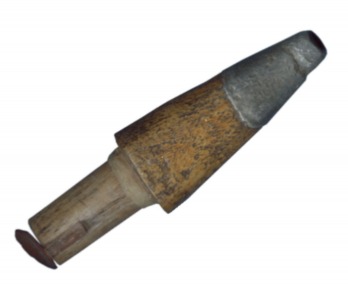
Since 2006, Patrick Burbaud has been Secretary of the non-profit organisation " Bohaires de Gasconha " and has been responsible for the following projects: “Method for the Boha”, 2007-2010, “Intangible Cultural Heritage” 2013-2014, “Survey of historical Bohas”, 2011-2015. Patrick plays bagpipes, flute and fife and has also made instruments.
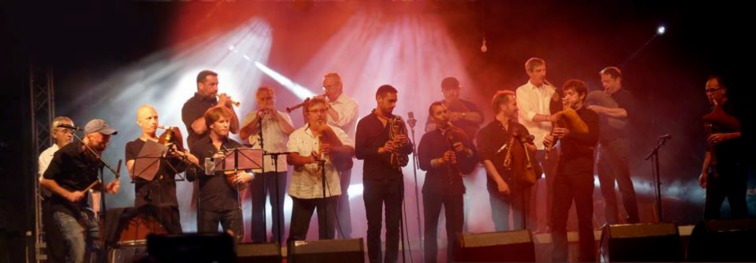
- Data Processing Notice (GDPR)
-
@BagpipeSociety on X (formally known as Twitter)
-
TheBagpipeSociety on Instagram
-
 BagpipeSociety on Facebook
BagpipeSociety on Facebook
Something wrong or missing from this page? Let us know!
